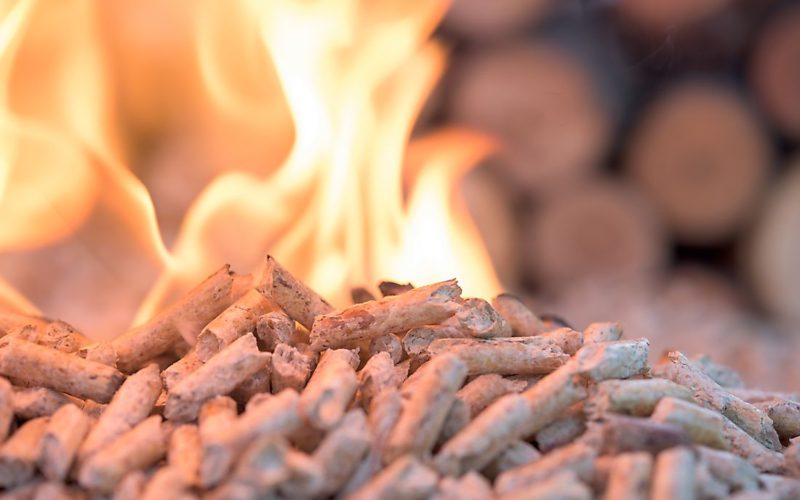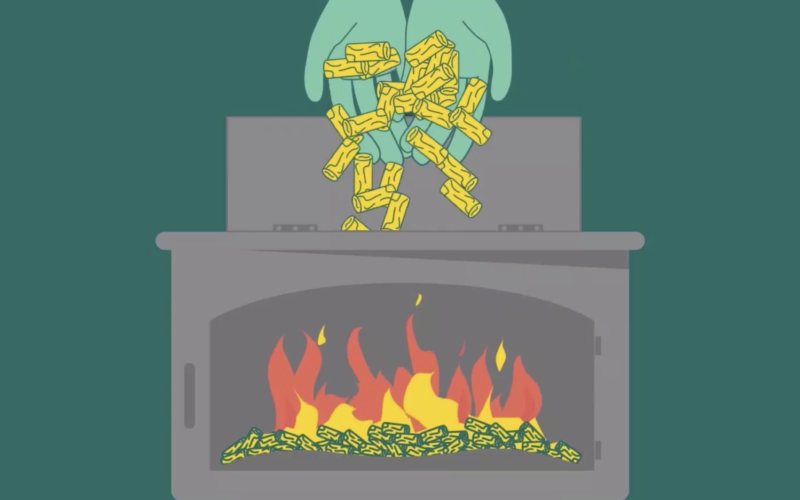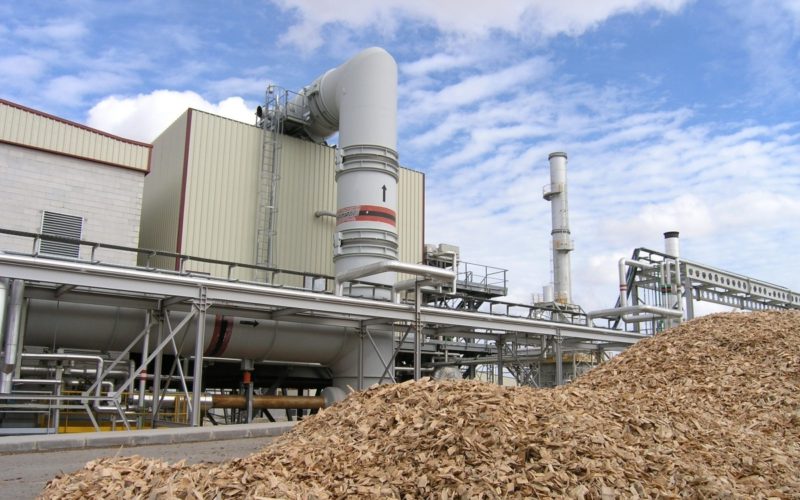Biomass Heating
Biomass can be used in solid form (firewood, wood chips, straw bales, sunflower husk, etc.) in process of direct combustion to produce thermal energy for heating and hot water supply.
Thermal energy from biomass is the main form of energy from biomass in Ukraine (94% of all bioenergy consumed in 2018).
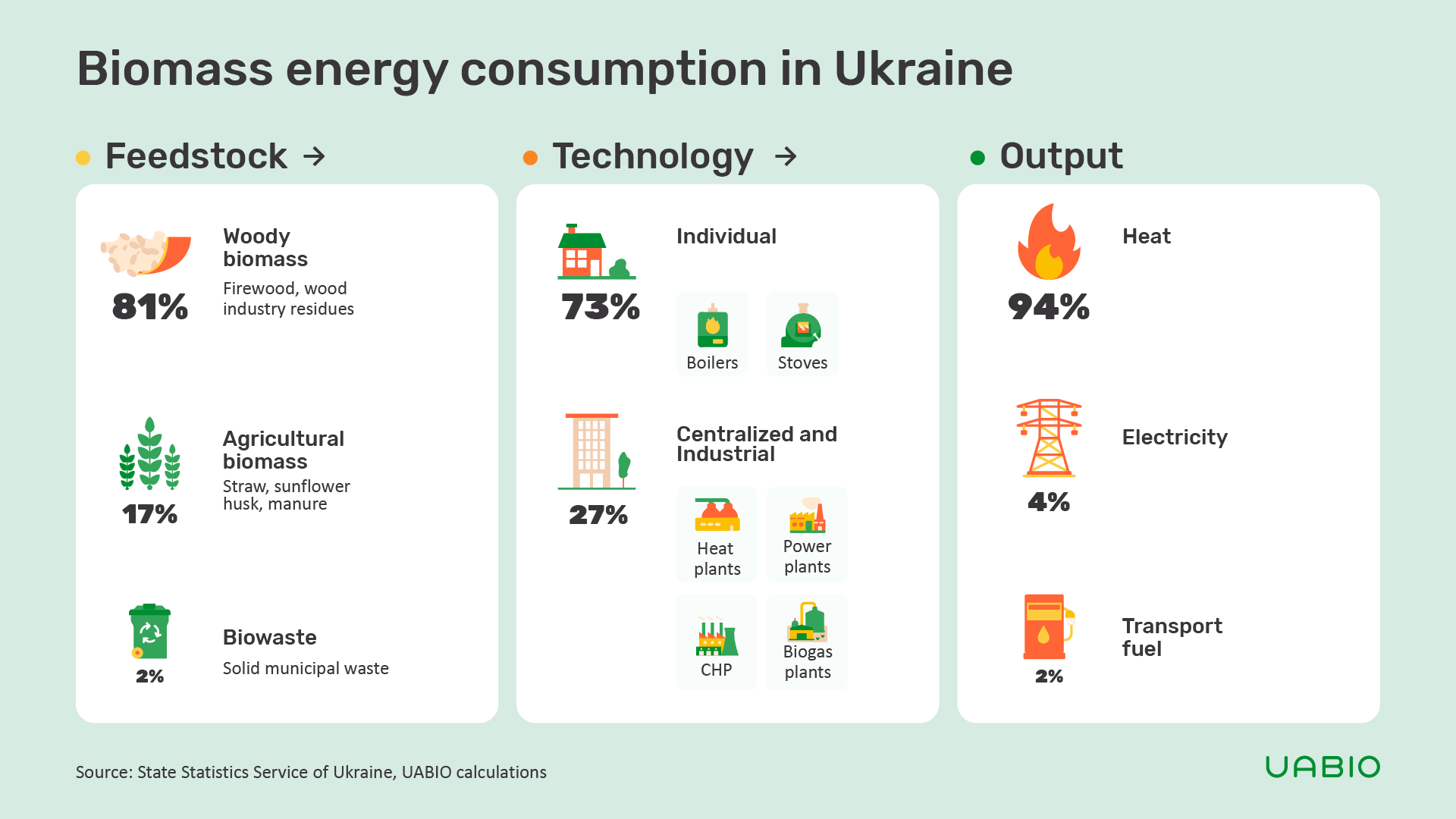
Current state
Thermal energy from biomass is mainly produced in the individual sector (domestic boilers and furnaces), as well as in municipal, industrial boilers, CHPs, TPPs and biogas complexes.
In recent years, the number of biofuel boilers at district heating companies has increased due to gas saving policies.
Thermal energy from biomass is used to supply consumers with heating and hot water.
In Ukraine, as of 2018, the biomass used for heat production is mainly wood biomass (chips, wood waste, firewood), as well as agricultural waste (straw, sunflower husk) and livestock waste (manure, manure).
Biomass energy is the major part of renewable heat in Ukraine
UABIO Position
The share of thermal energy from biomass in Ukraine is 97% of all renewable thermal energy over the past 5 years and about 8% of the Ukrainian total final energy consumption in 2018.
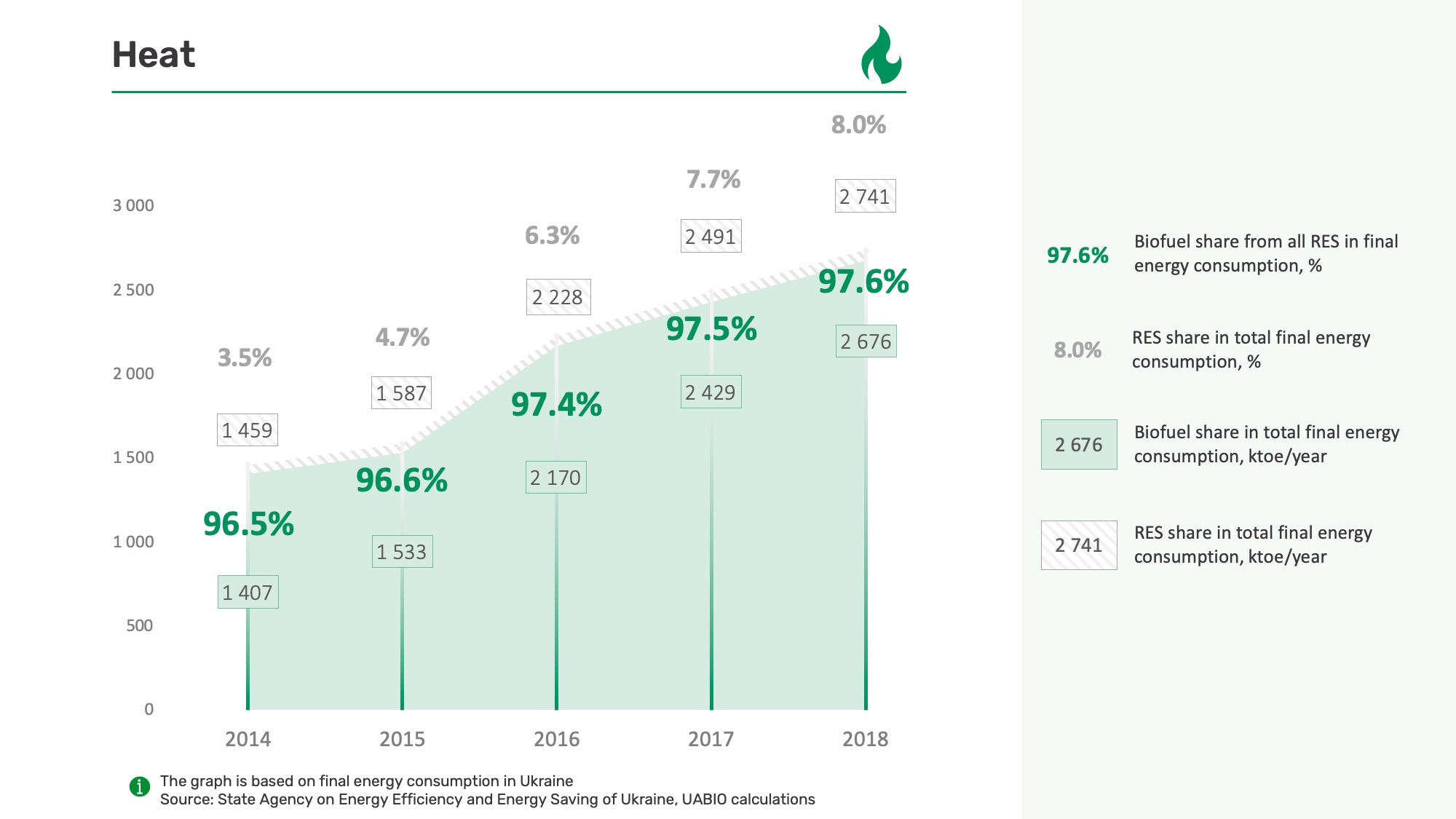
Market perspectives
According to the “Concept of implementation of state policy in the field of heat supply”, in 2019-2025 it is planned to reach 30% RES share in the total balance of heat supply systems, and in 2026-2035 up to 40%. Such indicators can be achieved mainly due to energy from biomass.
According to UABIO forecasts, The total consumption of biofuels in 2050 may be 23 Mtoe/year.
About 50% of these biofuels will be used for thermal energy production and will directly replace natural gas (equivalent to replacing 13.7 billion m3/ year of natural gas). The rest will replace electricity from coal and nuclear energy, as well as petroleum products in transport.
In the period 2020-2050 in Ukraine, the use of wood biomass will remain at the same level, but the use of straw, stalks, sunflower husk, agricultural residues, energy crops, liquid biofuels, solid waste for energy production will increase. This forecast is based on calculations that show that the potential of wood biomass and sunflower husks in Ukraine in 2020 has already been used by more than 90%.
The structure of biofuels use in Ukraine till 2050 (UABIO estimations)
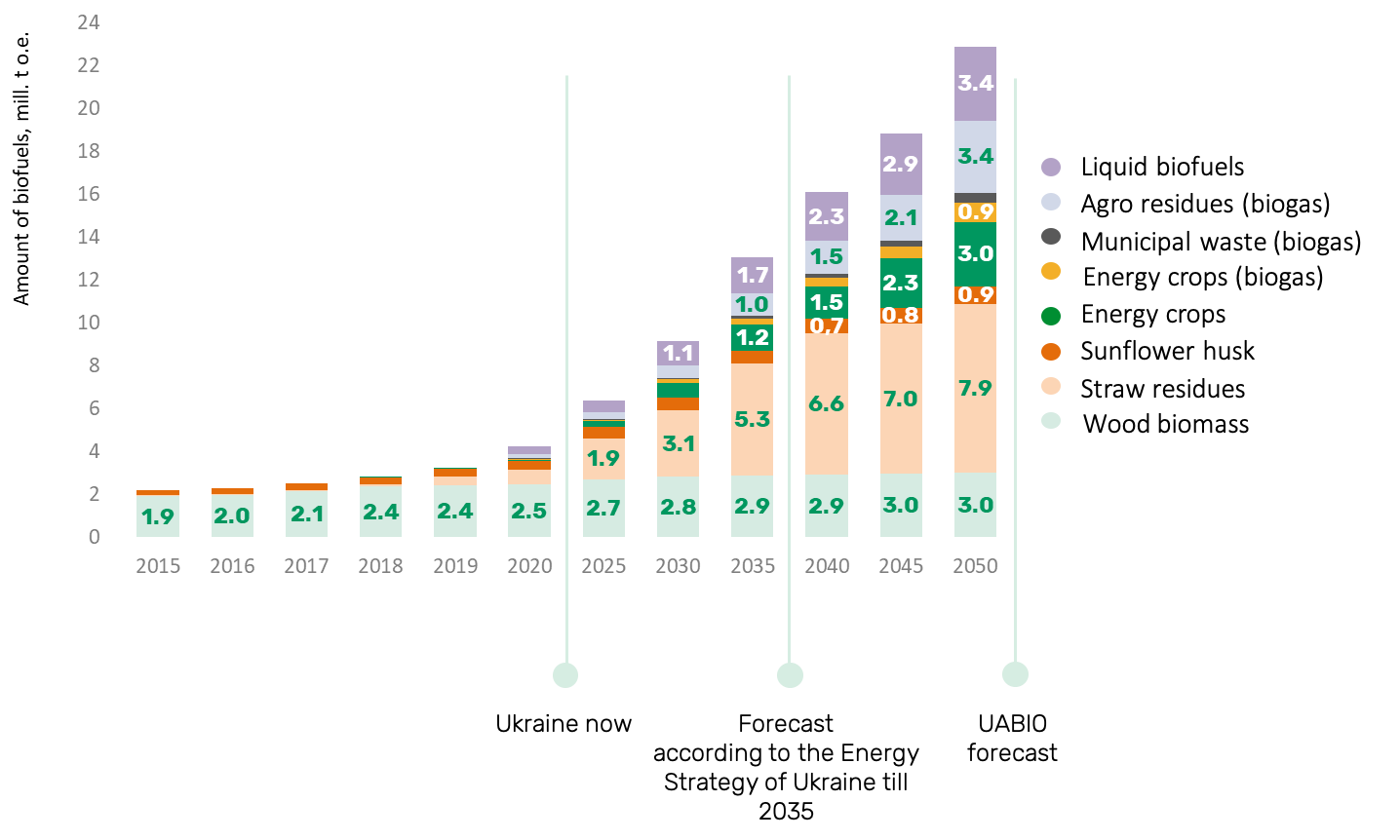
More than half of the used biofuels in 2020-2050 will be used to produce thermal energy from solid biofuels. The amount of energy that will be produced will increase from 3.2 Mtoe in 2020 to 11.7 Mtoe in 2050.
UABIO proposals on the development of the heat production from biomass in Ukraine
- Stimulation of thermal energy production from renewable sources.
In 2019, UABIO developed amendments to the law “On heat supply”:
Calculate tariffs for thermal energy from alternative sources without reference to the natural gas tariffs.
Settle the case when a producer of thermal energy from alternative sources sells it to a heat supply company.
Exempt entities that burn biofuels from stationary sources of pollution from carbon dioxide emissions tax. Why? This state of affairs does not correspond to world practice, since biomass is considered as СО2-neutral fuel, because the amount of carbon dioxide formed during burning equals the amount carbon dioxide which absorbed by plants during growth.
- Creating a transparent and competitive market for solid biofuels.
UABIO proposes to develop and approve:
Rules for e-commerce of solid biofuels.
The procedure for competitive selection of the e-commerce system operator for solid biofuels.
Requirements for the quality of solid biofuels, which are traded in e-commerce and other bylaws needed.
- Introduction of a market mechanism for regulating the heat supply sector.
Include in the implementation plan of the Concept of state policy in the field of energy and environmental protection (2019) from the Ministry of Ecology and Energy the need to adopt all bylaws provided to the draft law “On Amendments to Certain Laws of Ukraine on Competition in District Heating Systems”. The document provides for the creation of competitive heat supply systems and annual auctions for the purchase of thermal energy in them.
